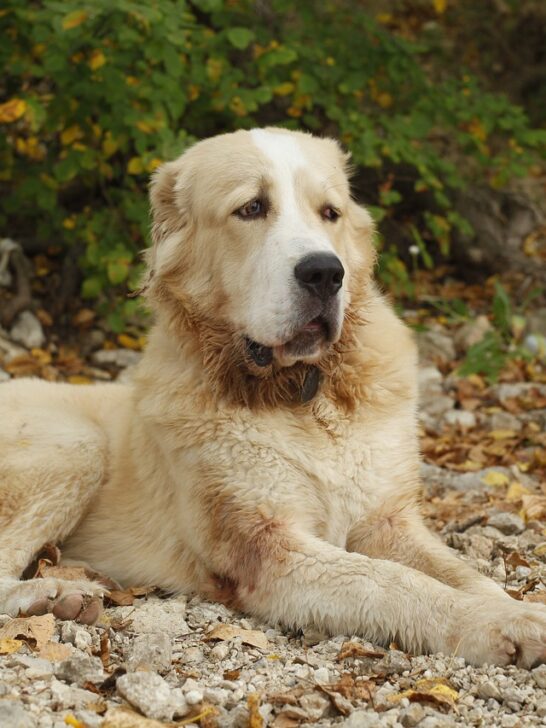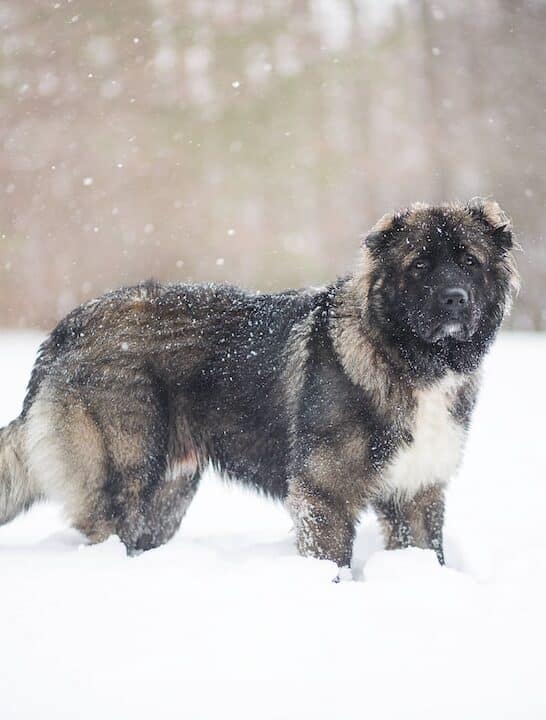West German Shepherd – History, Temperament, and Care
The German Shepherd dog has been around since the late 1800s. This popular German breed is known for its intelligence, agility, loyalty, and obedience.
As suggested by the name, German Shepherds were originally bred as working dogs for farms, where they were used for herding sheep and guarding them against predators.
However, due to their physically imposing and fiercely loyal nature, German Shepherds also made fantastic protection dogs, and it became common for them to be used in police work, disability assistance, and military roles.
Their rich history belies the fact that they have different working lines or sub-groups whose traits vary due to selective breeding programs.
One of the best–known working lines of the German Shepherd dog breed is the West German Shepherd dog.
Let’s dive in!
What Is a West German Shepherd?

A West German Shepherd is one of the many working lines of the German Shepherd breed.
German Shepherd dogs have various working lines, such as East German Shepherds, American German Shepherds, Czech shepherds, and other mixed lines.
Within the West German Shepherd line are two other working lines: the West German working line and the West German show line.
The West German working line is a breed geared towards producing working dogs, while the West German show line is meant to breed dogs for dog shows.
The working line of West German Shepherds is considered to be the most similar to the original German Shepherd breed that came out of Max von Stephanitz’s attempt to breed a better sheepdog that could be used in Germany.
These line dogs are bred for their unique body shape, coloring, and strong working drive.
These working-line German Shepherds have a very distinct look and breed standard that sets them apart from other working lines.
They also have distinctive personalities, behavior, and gait, and arevery healthy and active dogs.
History of the West German Shepherd
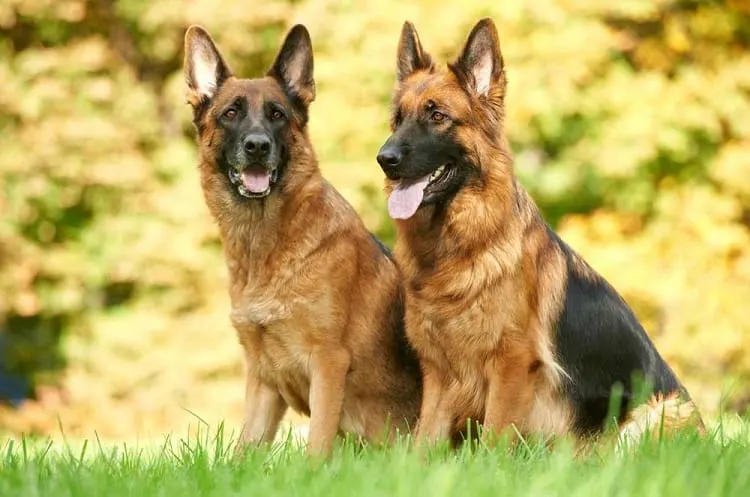
During the Cold War, Germany was divided into West Germany and East Germany.
This split led to differences in the approaches the two nations took towards breeding dogs, particularly the German Shepherd breed.
The dogs of West Germany became known as West German Shepherds, and those in the east were referred to as East German Shepherds.
East German Shepherds also go by Deutsche Demokratische Republik or DDR dogs.
The differences between West German Shepherds and East German Shepherds arose mainly because the post-World War II living conditions on either side of the Iron Curtain were so different, so West German Shepherds were bred for different characteristics than their East German counterparts.
While the East German line was raised to be a more aggressive breed, primarily used in military work and policing, West German Shepherds were bred for dog shows and as working dogs.
Today, the term “West German Shepherds” broadly refers to the German show line. Meanwhile, the East German line usually refers to the German working line dogs.
Physical Appearance

West German Shepherds can have different coat colors. Black and red is the most common, but black and tan, sable, black, and bi-colors are not unheard of.
The most noticeable difference in the physical traits of these line dogs compared to other German Shepherd types is that their backs have a more pronounced slope.
However, the slope is not as significant as the American German Shepherd.
West German Shepherds are bred to conform to the breed standards set by the Club for West German Shepherds Inc.
Because they are show dogs, the physical characteristics of the dog are quite important. They have a muscular build, though less muscle mass in the front of the body compared to East German Shepherds.
If you plan to get a dog house or a dog crate for your West German Shepherd, you’ll need a large one as these dogs grow up to 26 inches shoulder height, only adding to their regal appearance.
West German Shepherds don’t have the thicker paws of the East German Shepherd, and their hind legs are more defined than their East German counterparts but not as much as their American-bred cousins.
They have an overall balanced body shape which is meant to be physically proportional and show off the breed’s handsome features.
Overall, they have a very striking and admirable appearance.
Temperament

The temperament of German Shepherd dogs depends on whether they are show-line German dogs or the German working line.
The show lines are generally loving, affectionate, loyal, devoted, and protective. These dogs are also usually quite social and have vibrant personalities.
A German Shepherd puppy of this line can grow into a very friendly and loving pet with the proper training and socialization.
These dogs love to please their owners and are very intelligent—they quickly pick up new skills.
If you wish to get one as a family pet, you should socialize it with people and other animals at a young age and stay consistent.
Stick to reward-based training and use treats or playtime to motivate the dog during training sessions.
West German Shepherd show lines are also known for their high energy. They need plenty of mental stimulation, exercise, and intensive training to keep them healthy and happy and prevent boredom.
Meanwhile, working line German Shepherds are agile, fast, and fearless, with a high tolerance for pain. They have a higher working drive than their show-line counterparts.
They are bred and trained to remain calm and alert in stressful and dangerous situations, which is why they are great for police work and military roles.
Working line German Shepherds have low trainability and may be challenging to train and discipline once they get older.
Like show line German dogs, they have active minds and boundless energy, so they must be kept busy with work or else they get bored.
Health

There has been rampant inbreeding of West German Shepherds in recent years, which has led to hereditary hip and joint problems.
Their hips are angled more severely than other German Shepherd types, making them more susceptible to hip dysplasia.
It is very important to feed your dog a high-quality diet and make it exercise regularly to maintain its physical health.
Watch out for early signs of hip problems: limited range of motion, difficulty running or climbing stairs, “bunny” gait, and limping.
Grooming
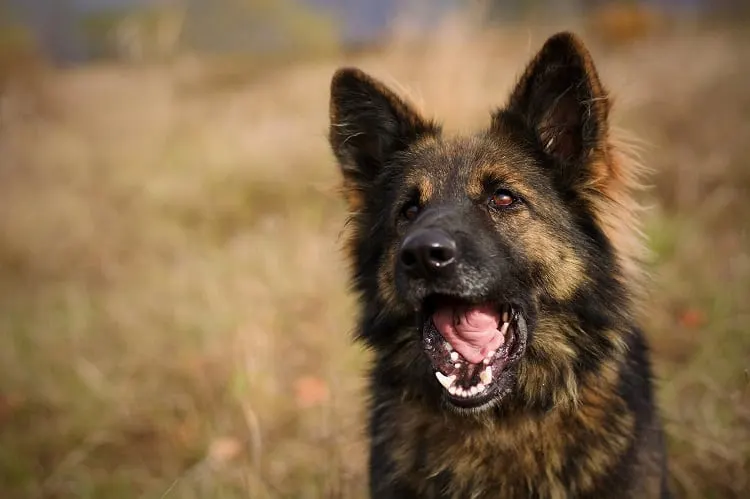
Whether you have a working line German Shepherd or a show line German Shepherd, these dogs tend to shed a lot.
Brush your dog’s coat thoroughly at least once a week to remove excess hair and prevent fur from getting all over your house.
Even with all of this grooming, if you’re a stickler for cleanliness and cannot tolerate a house covered with dog hair, a West German Shepherd may not be the right dog breed for you.
You should begin trimming your dog’s nails at a young age, as overgrown nails can lead to pain and trouble walking.
You should also clean your dog’s ears regularly to prevent dirt from building up and causing infections.
Diet
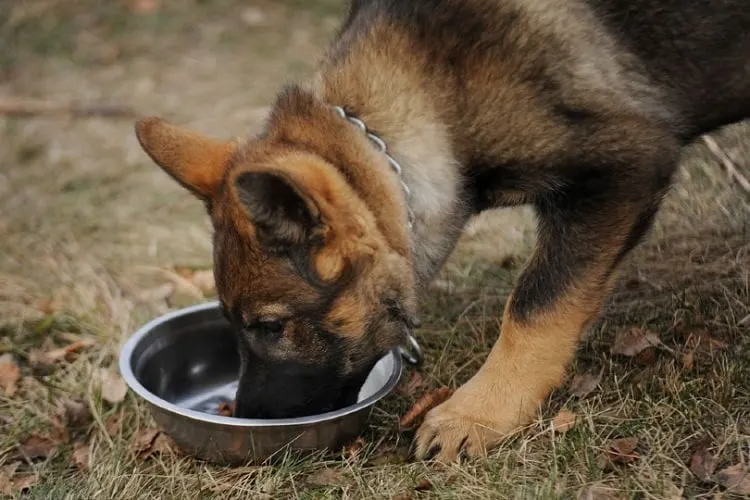
Like any other dog breed, West German Shepherds need to follow a healthy diet that is rich in protein and the right balance of essential nutrients, such as protein, fats, fiber, vitamins, and minerals, for good health and fitness.
The main ingredient in your dog’s diet should be high-quality meat protein (chicken, beef, lamb, pork, fish).
Some other protein-rich ingredients that can be part of a balanced diet for your pet are eggs, legumes, grains, and vegetables.
West German Shepherds can also occasionally enjoy small amounts of fruits, dairy, and nuts.
Try to stick to dry food as much as possible as it is more practical for large breeds like German Shepherds.
It is not too expensive, even if you go for a premium brand. Besides dry food, you can also give it a blend of dry and wet foods, home-cooked, freeze-dried, or dehydrated options.
Mix it up so your dog will get all the nutrients it needs and not tire of its diet.
Your dog’s diet should suit its age, size, weight, energy level, and lifestyle needs—factor in all of these elements when creating a suitable diet for it.
Consult your veterinarian to make sure your dog is getting all of its needed nutrients..
Overfeeding is also a potential problem with German Shepherds. German Shepherd puppies grow quickly between four and seven months of age and are prone to developing bone disorders if they grow too quickly due to overfeeding.
Overfeeding adult German Shepherds can result in joint disorders and other medical issues. Do not feed your pet too many treats or table scraps.
Feed it at regular intervals instead of giving it food whenever it wants. Physical activity is also crucial to its overall health. Keep your dog active and make it play and exercise a lot during the day to prevent obesity.
Keep an eye out for allergens, too. Always research the ingredients in your dog’s food and make sure that anything new you introduce to its diet is safe for consumption.
Consult a veterinarian if you have doubts or concerns about your dog’s diet or weight.
West German Shepherd as Family Pets
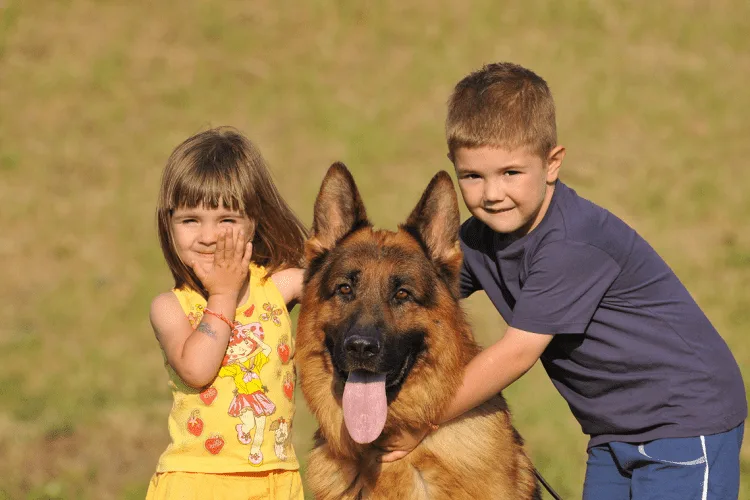
West German Shepherd show line dogs are known to be great family pets. They are affectionate, friendly, and easy to live with.
They also have a sweet and calm temperament, and their obedient and easygoing nature makes them easy to train. This makes them ideal family dogs.
These line dogs are also great with kids and can serve as wonderful nannies.
However, their high energy levels make them best suited for an active family that can make sure that their dog is able to run about and play for long hours.
In contrast, working line dogs are more aggressive and have a higher prey drive than the show lines.
A working line German Shepherd may also unintentionally bite or harm a child that runs in front of it. This is because its prey instinct may immediately kick in when it sees anything that is moving fast.
The high energy and active mind of these dogs is another reason they don’t make great family dogs. They love to stay busy and will get bored if they have to follow a quiet daily routine.
How Protective Are West German Shepherds?
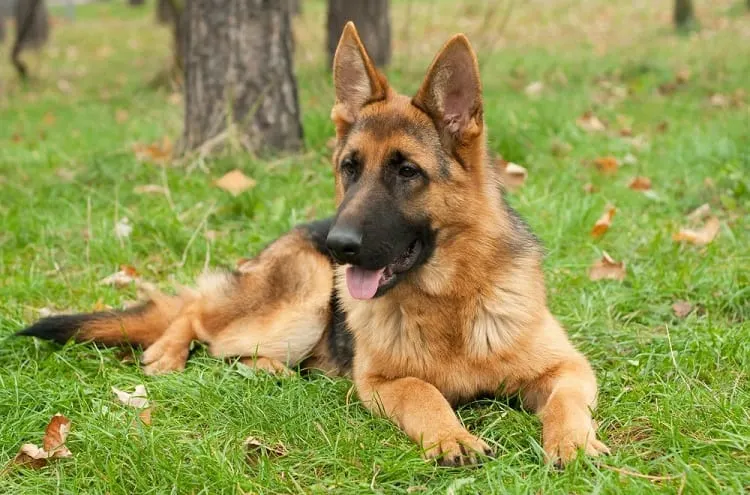
The extent of the protective nature of West German Shepherds depends primarily on their line.
The West German working line is bred mainly for military and police work, so breeders of these line dogs work hard to cultivate high levels of protectiveness and fierceness.
However, breeders of West German Shepherd show lines breed friendlier dogs as they often serve as competition and companion dogs.
These dogs have a lower productivity drive than their working-line counterparts. Nonetheless, their active and energetic nature is still very strong.
These line dogs are not quite as low-key and sedentary as the American German Shepherds—they are excellent guard dogs for families.
They are highly protective of their owners and are very cautious and alert around strangers.
Make sure you get the right puppy that is a perfect mix of friendliness and protectiveness for your family’s needs.
Conclusion
Today, both of the West German Shepherd lines continue to be as popular as their ancestors bred more than a century ago.
Stringent breeding guidelines have also ensured they still have most of the characteristics of the original German Shepherds.
If you wish to bring home a West German Shepherd puppy or dog, you must consider the specific traits that suit your needs and lifestyle.
The show lines are best for dog shows and as companions and house protectors. If you need a hard-working guard dog for the farm or other professional uses, it’s best to go for a working line dog.
And regardless of the German Shepherd line you choose, you must take good care of your pet to ensure your pet is healthy and retains its temperament.
Good nutrition, socialization, hygiene, and obedience training all significantly impact a dog’s personality and ability to adjust to a new environment, so make sure you’re ready to put in the work to ensure that your pet has everything it needs.
Resources:

















